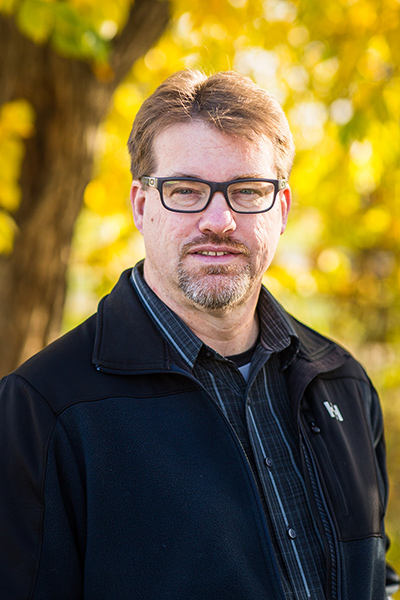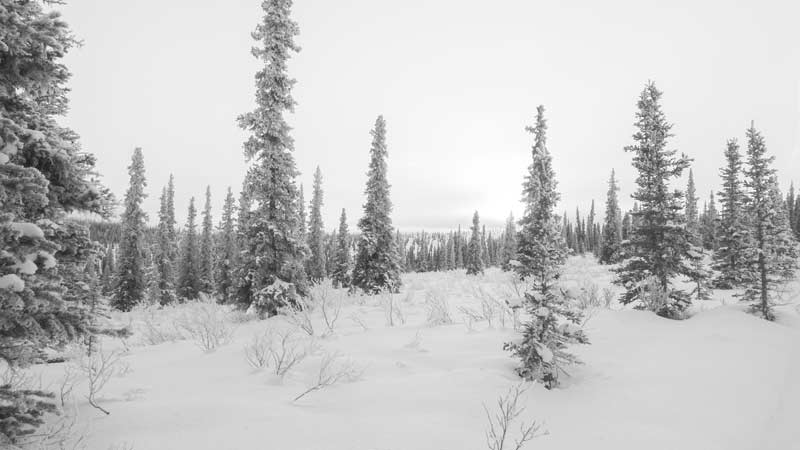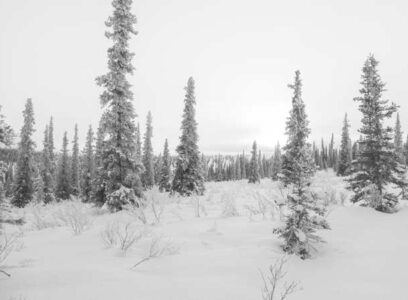Daryl Farmer
Restoration
I was fortunate that this project coincided with a home purchase that placed me next to the Skarland Trail, where I can walk the boreal forest daily and note the details and intricate daily and seasonal shifts. For me, the writing process begins not on the page, but in sensory awareness of place and in the way that stories inhabit our day-to-day lives.
As a writer of fiction who lives in this place, the theme of boreal stories seemed a natural fit. But I confess that I struggled to find a foothold at first. I attended as many of the presentations as I could and took a lot of notes. I was inspired by all of it. Initially I tried to implement everything, but when doing so, it often felt forced, and I had to trim much of it. There’s an adage I sometimes use with my students: learn all you can; forget all you learned; write. This means that the research and narrative tools should be implemented organically and not force-fed into the work. I hope some of the science still lurks in the subtext of this story.
Outside of ITOC, I did substantial reading on the topic of shinrin-yoku, the Japanese term that translates as forest bathing, a meditative approach to spending time in nature. While I didn’t find a lot of research applying this concept to the boreal forest specifically, I couldn’t read about shinrin-yoku without connecting it to the stillness of winter here. I also read research about eco-grief, the emotional toll that habitat and species loss, melting glaciers, and climate change takes. I find that narrative tension often relies on contrast, so I worked with these two elements – loss and healing. An essay by Lia Purpura titled “The Ecology of Attention” about the way that phone scrolling can diminish our contemplative time was also an influence.
I knew the story needed one more element to make it work. One day as I walked the trail, I was surprised to see a group of bison inside the fence at the Large Animal Research Station. I started reading about the wood bison restoration project, which provided the component I needed to bring the story to completion, ending it on a note of hope. This restoration project is spearheaded by biologist Tom Seaton at the Alaska Department of Fish and Game and I’m deeply grateful for his willingness to consult about this project.
“Restoration” is an excerpt from a longer project, Inversion, a novel told in stories.
Daryl Farmer
Daryl Farmer is the author of Bicycling beyond the Divide, a nonfiction book that chronicles a bicycle ride across the U.S. West, and Where We Land, a collection of short fiction. His recent work has appeared in Terrain.org, Ploughshares, and Natural Bridges, among other literary journals. He is an associate professor at the University of AlaskaFairbanks, where he has served as director of the MFA program in creative writing. He is also affiliated faculty for the Northern Studies program, and for six years served as faculty member in the University of Alaska Anchorage low-residency MFA program.
Website: darylfarmer.com


